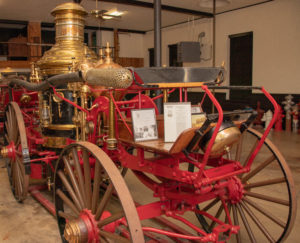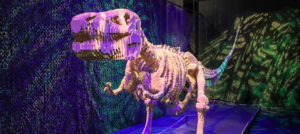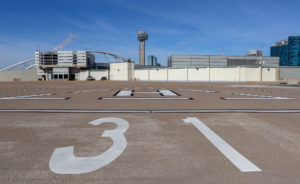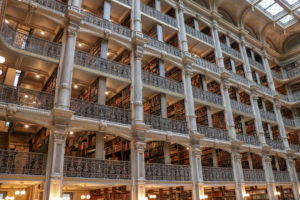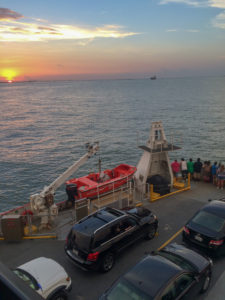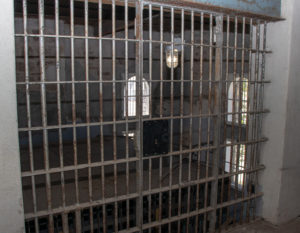Experience and Remember: The Dallas Holocaust Museum
This past Saturday, I was going to fly out to see the city of San Marcos, but a weather system and fatigue from a busy work week made me decide to stay in town. The time was not wasted, however. I visited a place that I have passed by many times while riding the light rail into the downtown area, the Dallas Holocaust Museum. I wanted to see the museum, as the Holocaust had always been an event in history that struck my interest. How it was possible for a government to massacre so many humans in such a ruthless and torturous manner was just incomprehensible.
I began my journey the same way I usually do when heading to a destination in the city center: by boarding the DART green line train at the Downtown Farmers Branch station. Parking woes and fighting people on the highway on a Saturday was something I easily could do without. The trip took about 35 minutes, and I disembarked at the West End station. From there, it was about a 5-minute walk to the museum.

Upon entering, I saw that this was a multi-use building, with the museum occupying only the first floor. I normally would have to pay to get in, however since I was a Bank of America cardholder, I get free admission to a number of museums across the country on the first full weekend of each month, and this was one of them. After showing my bank card, I was handed an audio tour device, which would serve as my tour guide as I traversed the exhibits.

The museum was structured around one day in the Holocaust – April 19, 1943.

Although the exhibit didn’t seem to be in any particular order(from what I gathered), it was easy to follow and talked about the Holocaust mainly by event. The first section I came to talked about the three brave men that stopped the twentieth train convoy bound for the Auschwitz death camp on April 19th. The only mass breakout ever to happen on a death camp bound train, these men did it only with a lantern, a pair of pliers, and a pistol. Although they sought assistance from underground resistance groups, assistance was denied due to possible retaliation. 223 people escaped, of which 118 ultimately survived the Holocaust.


As I moved on, a jumpsuit caught my eye. Having studied the Holocaust in school and read books such as Night, I had an understanding of the horrors of the camps. However, when I saw the jumpsuit and various other artifacts on display such as shoes and eating utensils, it all became very real for me the horrors that the human race can unleash.
Most of those shoes on display were worn by kids. The Nazis didn’t care if these prisoners were young or old, they were tortured the same. If they got any food at all, it was so little that it was definitely not enough to sustain life.

I then saw a red boxcar. This boxcar was the first European one to be shipped to the United States. It was of the same type that was used to transport thousands of Jews, Gypsies, homosexuals, and anyone else the Nazi Party sought unfit to the camps.

The audio guide said that the undercarriage of the boxcar was severely damaged at some point in time, and was restored to its original condition as best possible to provide us with the most accurate picture.
Next, I learned about the ghettos. These enclosed living districts were designed to segregate Jews from the rest of the population. In the ghettos, disease and hunger ran rampant. This diagram shows why clearly.

While the normal food ration for Germans was 2514 calories, Jews only got a measly 184. That less than 8% of what the “superior race” got! This diagram and the many pictures in the exhibit helped me understand life in the ghettos and how the Nazis were slowly carrying out the demise of these people.

April 19th was also the date of the Bermuda Conference. Held at the British Territory of Bermuda, it was a meeting between delegates of the United States and the United Kingdom. The topic at hand was how to save the Jews who were in Nazi occupied Europe. Although the topic was discussed, this meeting failed to stop the concentration camps and the Nazi Party. The conference became the subject of much criticism, with people labeling it as a “program of inaction”.

Finishing up the core exhibit was the memorial room. Names on the wall listed the family members of people that died in the Holocaust, while a granite memorial in the middle bears a resemblance poem for the people that died in this tragic event.

Next to the memorial, there was a theater that was showing a documentary. I did not stop in to watch, but there were quite a few people who had.
I then walked back into the lobby area. On the other side of the museum was the special exhibit section. They were showing a photo collection detailing the internment of Japanese Americans by the U.S. Government during World War II. Although they weren’t physically tortured or sent to death like the Jews, it illustrated a very dark time in American history, when the color of your skin or your ancestry could make you be viewed as a traitor to your country. The photos were very well captured, and the exhibit well organized. (photography was not allowed in the special exhibit area)
Before leaving, I stopped by the mini gift shop, right next to the admissions counter. They sell various souvenirs and literature, ranging from lapel pins and t-shirts to books and posters. I opted for a t-shirt. The designs they offered were pretty cool!

From there, I rode the train back to mi casa. Although this was one of the smaller museums I have been to, few have been as thought-provoking as this one. As perhaps best said in the words of philosopher George Santayana, “Those who cannot remember the past are condemned to repeat it.” That saying could not be truer, and this museum goes far in ensuring that this dark side of history is known by the masses so that such horror will never happen again.



